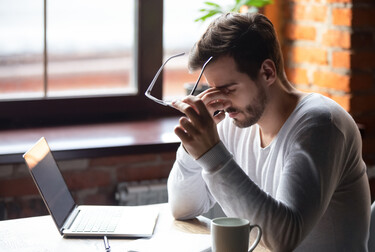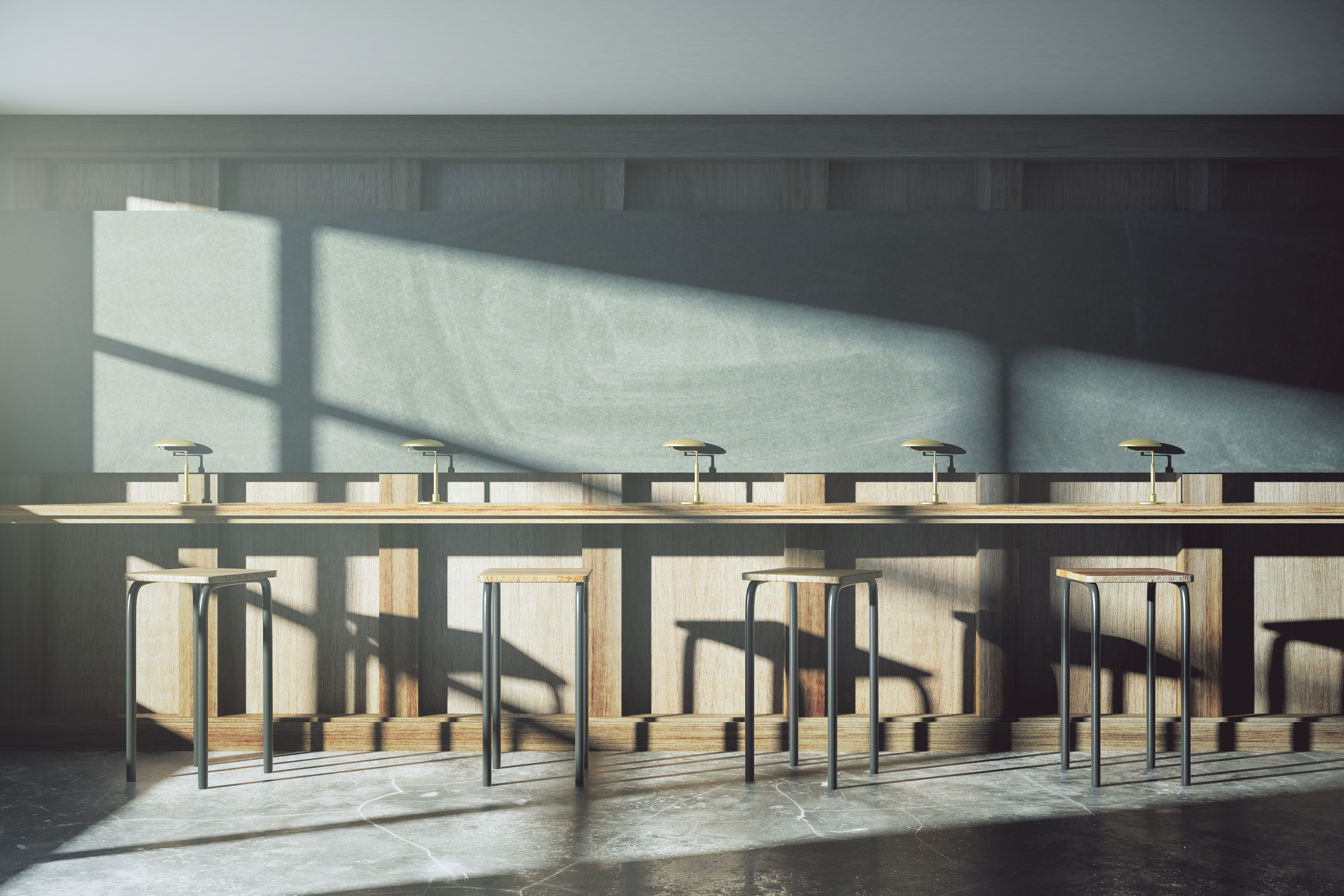Glare: Impacts to Health and Performance

While access to natural light in our buildings is key, it’s also important to manage the risk of glare that comes with it. This issue is often overlooked in project planning or handled in an unsuitable way, and project teams may fail to consider the negative effects that glare can have on the health and well-being of building occupants.
Physiological and Psychological Effects of Glare
Here’s what happens when we are exposed to glare:
- The effects are instant: it alters our visual acuity and we are no longer able to make out the details of the visual task we are performing. We then need a little time to recuperate our full visual capacity — ranging from a few seconds to a few minutes, depending on the person — and carry on with the activity that was interrupted.
- We continue with our tasks, but in disruptive or uncomfortable conditions, which requires additional effort on the part of our visual system. Intense and prolonged strain on our visual system causes visual fatigue. Subjectively experienced symptoms may include tension, tingling, burning in the eyes, a flickering sensation, increased light sensitivity, weakened short or long-distance vision, and headaches. Objective symptoms of visual fatigue also include progressive deterioration in visual function — problems with accommodation, weakened sensitivity to contrast and decreased resistance to glare — and even visual acuity1.
Effects of Glare in Working Environments
The main thing we lose when we experience glare at work — whether from direct sunlight or reflections obscuring the view of our screen — is time. Employees may take a break waiting for the disruption to go away, seek another workstation to use or try to find a solution to improve the situation.
Studies have also shown that it takes 25 minutes to get back into a task following an interruption2. At the end of the day, that’s a lot of time wasted, which can come at huge cost for businesses.

Beyond the impact on productivity at work — a decrease of 15% to 21% in comparison to a glare-free workplace according to some studies3— you can also expect decreased satisfaction and motivation and an increase in absenteeism, which come at extra cost to the company4.
Effects of Glare in Schools
In schools, poorly managed light influx can create reflections on tables or projector screens, making it difficult for students to read and learn. The impact is particularly significant in math class, where teaching often involves explaining problems on the board5. This can also be a source of stress for students who are worried that they won’t have enough time to take notes. Teachers may also lose time if they have to read out what they’ve written or go shut a blind. Glare on desks can also hinder reading and writing — and learning. Finally, uncontrolled glare can cause distraction and lapses in concentration.
In terms of medium- to long-term effects, visual fatigue and the migraines caused by glare can directly affect students’ ability to learn and teachers’ performance, as well as their mental state.

Effects of Glare in Healthcare Facilities
The visual system changes as we age: the lens of the eye gradually thickens and becomes opaque, causing a change in how light transmits1. The pupil also contracts more slowly and entry of light into the eye is no longer controlled properly6. These changes bring about a deterioration in visual function: increased sensitivity to light7, weaker resistance to glare, and a decline in visual acuity and/or contrast sensitivity.
Many studies have shown a very strong correlation between sensitivity to glare and loss of visual acuity, risks of falling and accidents8. These factors also impact people’s ability to move around and perform daily tasks, and therefore their quality of life9. This means that it is crucial to limit the risk of glare as much as possible in residential care homes and services for elderly people in healthcare facilities.
Sensitive Groups
These issues may be accompanied by increased sensitivity to light or even “photophobia” (i.e., abnormal light intolerance). This occurs with eye issues such as cataracts or macular degeneration (ARMD)1. It also applies to people who are susceptible to migraines3. People with autism or other conditions such as sensory processing disorders or attention deficient disorder (ADD) — particularly children – also can suffer from hypersensitivity to light10, 11.
Individuals with these conditions experience glare more often. As the conditions can appear at any age, they could affect any working employee or child in school. This makes it all the more crucial to anticipate and manage the risks of glare, particularly when designing an inclusive space.
Conclusions
Natural light is crucial to our health and well-being in any living space. However, the risk of glare must be treated with the same seriousness as the risk of overheating and issues of air and sound quality. Poor glare management can have negative repercussions on employees’ performance at work, students’ learning in school, the safety and well-being of the most vulnerable in care facilities — and on people’s health more broadly.
Holistic solutions should be found to ensure that access to natural light and views of the outdoors are not compromised. A well-thought-out concept combined with smart solar protection solutions like dynamic glazing now allow us to achieve this.
Sources:
- R. Floru. Eclairage et vision. [Rapport de recherche] Notes scientifiques et techniques de l’INRS [Lighting and vision. {Research report} INRS scientific and technical notes]
- Easily distracted: why it’s hard to focus and what to do about it, D. Rock, 2017
- Windows and Offices: A Study of Office Worker Performance and the Indoor Environment, HMG, 2003
- The benefits of daylight through windows, P. Boyce, 2003
- Windows and Classrooms: A Study of Student Performance and the Indoor Environment, HMG, 2003
- Photophobie et dégénérescence maculaire liée à l’âge [Photophobia and age-related macular degeneration], A. Cognée, 2012
- A comprehensive assessment of visual impairment in a population of older, G.S. Rubin et al, 1997
- Prévention des chutes accidentelles chez la personne âgée: argumentaire [Preventing accidental falls in older people: leaflet], HAS, 2005
- The association of multiple visual impairments with self-reported visual disability: SEE project. G.S. Rubin et al, 2001
- How Sensory Experiences Affect Adolescents with an Autistic Spectrum Condition within the Classroom, FEJ Howe et al, 2013
- High Prevalence of Self-Reported Photophobia in Adult ADHD, J.J. Kooij et al, 2014